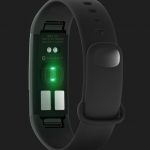
If you are an engineer in the medical device industry, you probably have a love/hate relationship with the FDA-mandated design controls process. While implementing design controls can feel like a major damper on your creativity and productivity in the design process, they’re still a legally mandated requirement for every medical device company.
This area of regulation tends to be full of misconceptions and misgivings, along with a dash of frustration when it seems that design control documentation is that one thing holding your company back from compliance and preventing you from getting to market.
In reality, design controls should be something that helps your business, especially if you work on the documentation early in your design process. This article includes the best tips and advice that will help you implement design controls in a way that benefits your product development efforts. By the end, you will view design controls not as a burden, but as an asset – a process that adds genuine value to your final product. Let us take a look.
Recognize the Value of Design Controls in Your Business
For starters, it is important that you and your team fully recognize, acknowledge and accept the value of design controls in your business.
Many people feel that design controls are nothing more than a heavy load of FDA-mandated documentation, and who wants to be doing paperwork when they could be contributing something useful? People with this type of thinking also believe statements like “Design controls take too long, we should spend our time creating the product and worry about documentation later” and “We don’t have the time and resources to do all of these steps, this will stifle innovation in our business.”
While it is correct that design controls take up extra time, there is no need for yours to be overly burdensome. Design controls are mandated so you can prove that your product is safe, effective, and meets its intended use requirements. This can all be summed up in an “intended use statement” about your device that forms the basis of defining user needs, a process which directly informs your design inputs.
Design controls don not just aid product development, they are product development.
What is more, they have a real impact on the success of your medical device. A study published by the FDA analyzed voluntary product recalls over a six-year period and concluded that 44 percent of the studied recalls could have been prevented by adequate design controls.
Design control documentation is also proprietary. When you build a new device, you are going where nobody has ever gone before, and any information you generate by doing so is of inherent value to your business, including new innovations that will enable your final product.
Finally, remember that the FDA guidelines are there to help you build a product that fits consumer need. If your medical device does not meet its intended use requirements, you have wasted all of your time and money for nothing. To someone who asks “How can we afford to implement design controls?” I reply “How can you afford not to?”
Read more here.











